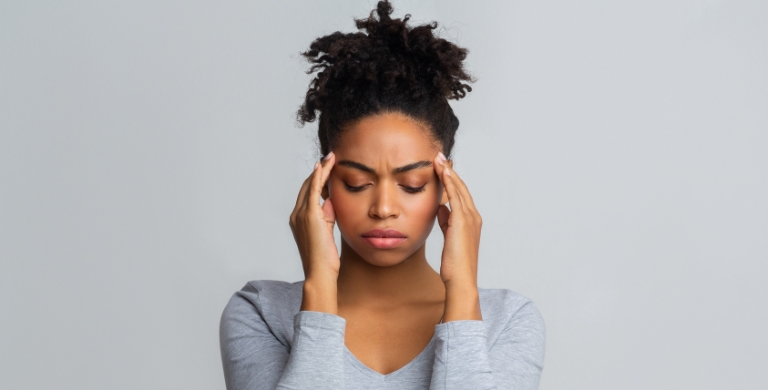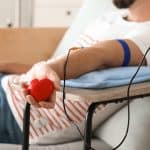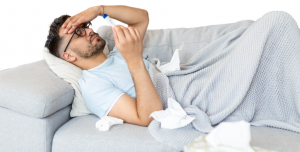Hormonal changes, specifically fluctuations and estrogen that can occur during menstrual periods, pregnancy, and perimenopause, can trigger a migraine attack in women. Other known triggers include certain medications, drinking alcohol (especially red wine), too much caffeine, and stress.
A migraine is a headache that can cause severe throbbing pain or a pulsing sensation, usually on one side of the head. It’s often accompanied by nausea, vomiting, and extreme sensitivity to light and sound. Migraine attacks can last for hours to days, and the pain can be so bad that it interferes with your daily activities.
What causes hormonal migraines in women?
- Menstrual cycle. Levels of oestrogen and progesterone fall to their lowest levels just before menstruation.
- Pregnancy. Oestrogen levels rise in pregnancy. For many women, hormonal headaches go away during pregnancy. However, some women experience their first migraines during early pregnancy and find relief after the first trimester. After giving birth, oestrogen levels fall rapidly.
- Perimenopause and menopause. Fluctuating hormone levels in perimenopause (the years leading to menopause) cause some women more headaches. However, symptoms improve as women reach menopause for some, and for others, they worsen. It may be due to the use of hormone replacement therapies.
- Oral contraceptives and hormone replacement therapy.Birth control pills and hormone replacement therapy can cause hormone levels to rise and fall. Women whose migraines result from hormonal changes while taking contraceptive pills typically have migraine attacks during the last week of the cycle, when the pills do not have hormones.
Menstrual or hormonal migraines are like regular migraines; however, a migraine differs for everyone. In many people, it happens in stages. Not everyone who has migraines goes through all stages.
What are the migraine stages?
- Prodrome. One or two days before a migraine, you might notice subtle changes that warn of an upcoming migraine, including constipation, mood changes from depression to euphoria, food cravings, neck stiffness, increased urination, fluid retention, and frequent yawning.
- Aura. For some people, an aura might occur before or during migraines. Auras are reversible symptoms of the nervous system. They’re usually visual but can also include other disturbances. Each sign usually begins gradually, builds up over several minutes, and lasts up to 60 minutes. Examples of migraine auras include visual phenomena, such as seeing various shapes, bright spots, or light flashes, vision loss, pins and needles sensations in an arm or leg, weakness, or numbness in the face or one side of the body, and difficulty speaking.
- A migraine usually lasts from 4 to 72 hours if untreated. How often migraines occur varies from person to person. Migraines might occur rarely or strike several times a month. During a migraine, you might have pain, usually on one side of your head but often on both sides, pain that throbs or pulses, sensitivity to light, sound, and sometimes smell and touch, and nausea and vomiting.
What are the symptoms of hormonal migraines?
– Loss of appetite
– Fatigue
– Acne
– Joint pain
– Decreased urination
– Lack of coordination
– Constipation
– Cravings for alcohol, salt, or chocolate
Migraine headaches can be devastating and make it impossible to go to work, school, or experience other daily activities. Fortunately, there are ways to prevent migraine and help you manage and endure the symptoms.
How to manage hormonal headaches?
– Drink plenty of water to stay hydrated.
– Lie down in a dark, quiet room.
– Place an ice bag or cold cloth on your head.
– Massage the area where you feel pain.
– Perform deep breathing or other relaxation exercises.
Migraines are often undiagnosed and untreated; Consult a doctor if a headache doesn’t go away or comes back, a stiff neck, fever, vomiting, numbness or weakness in the limbs, or trouble speaking.












